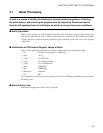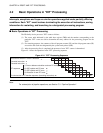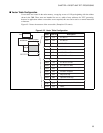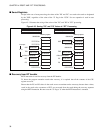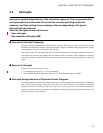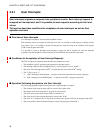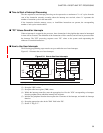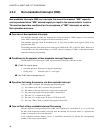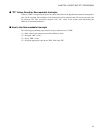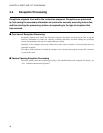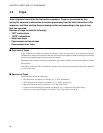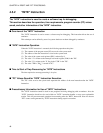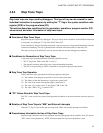
40
CHAPTER 4 RESET AND "EIT" PROCESSING
4.3.2 Non-maskable Interrupts (NMI)
Non-maskable interrupts (NMI) are interrupts that cannot be masked. "NMI" requests
can be produced when "NMI" external signal pin input to the microcontroller is active.
This section describes conditions for the acceptance of "NMI" interrupts, as well as
their operation and uses.
■ Overview of Non-maskable Interrupts
Non-maskable interrupts (NMI) are interrupts that cannot be masked. "NMI" requests can be produced
when "NMI" external signal pin input to the microcontroller is active.
Non-maskable interrupts cannot be disabled by the "I" flag in the condition code register (CCR) in the
program status (PS).
The masking function of the interrupt level mask register (ILM) in the "PS" is valid for "NMI". However, it
is not possible to use the software input to set "ILM" values for masking of "NMI", so that these interrupts
cannot be masked by programming.
■ Conditions for Acceptance of Non-maskable Interrupt Requests
The FR family CPU will accept an "NMI" request when the following conditions are met:
● If "NMI" Pin Input is Active:
• In normal operation: Detection of a negative signal edge
• In stop mode: Detection of an "L" level signal
● If the "ILM" Value is Greater than 15.
■ Operation Following Acceptance of a Non-maskable Interrupt
When an "NMI" is accepted, the following operations take place:
(1) The contents of the "PS" are saved to the system stack.
(2) The address of the next instruction is saved to the system stack.
(3) The value of the system stack pointer (SSP) is reduced by 8.
(4) The value "15" is written to the "ILM".
(5) The value "0" is written to the "S" flag in "CCR" in the "PS".
(6) The value "TBR + 3C0
H
" is stored in the program counter (PC).
■ Time to Start of Non-maskable Interrupt Processing
The time required to start processing of an "NMI" can be expressed as a maximum of "n + 6" cycles from
the start of the instruction currently executing when the interrupt was received, where "n" represents the
number of execution cycles in the instruction.
If the instruction includes memory access, or insufficient instructions are present, the corresponding
number of wait cycles must be added.




